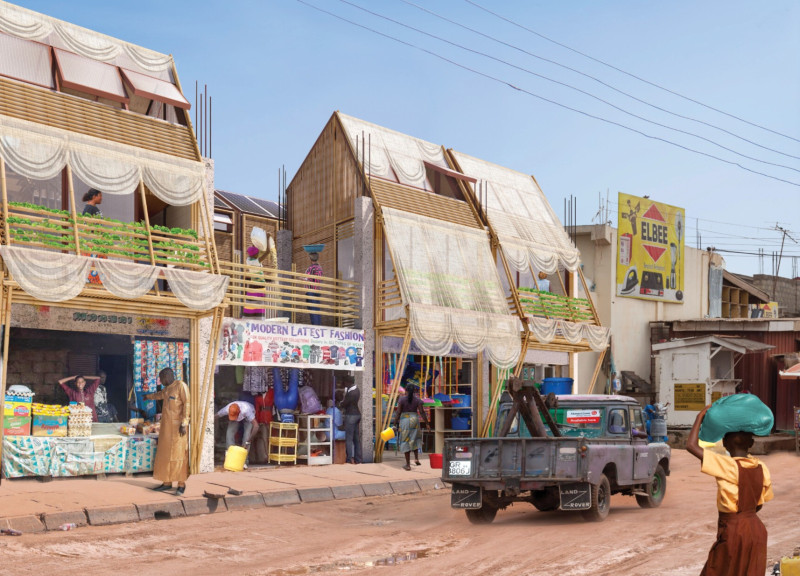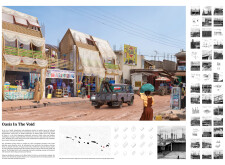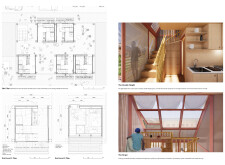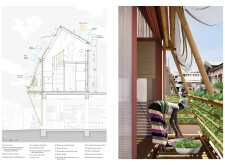5 key facts about this project
The project located in Nima, Accra, aims to tackle the pressing challenges posed by rapid urbanization and a lack of adequate housing in a district characterized by informal settlements and abandoned structures.
The initiative introduces innovative micro-community designs that repurpose underutilized buildings, ultimately working to create a more cohesive urban environment. This approach is not just about aesthetics; it focuses on the design principles, material choices, and distinctive features that enhance the project’s significance within the urban fabric of Accra.
Spatial Design and Functional Integration
Central to the design is the creation of vibrant communal spaces, transforming vacant lots and uninhabitable buildings into multifunctional environments. This strategy is driven by a commitment to sustainability and resilience, evident in the layout where clusters of micro-units surround central communal areas that encourage social interaction. The spaces cater to diverse uses, including living quarters, public areas, and zones for agricultural practices, reinforcing community ties.
Moreover, the integration of ecological systems is crucial in this setting. Buildings are envisioned as "productive envelopes," featuring green roofs and vertical gardens to strengthen the connection between urban residents and nature. Balconies and terraces are specifically designed for urban gardening, promoting community engagement in food production and helping to address local food security challenges.
Sustainability and Materials
In terms of materials, the project makes thoughtful choices to ensure sustainability and local relevance. Key components include lightweight bamboo wall panels that minimize the carbon footprint, recyclable polycarbonate panels providing thermal insulation and natural light, durable recycled steel frameworks, cost-effective plywood flooring, solar photovoltaic panels for renewable energy harnessing, and efficient water harvesting systems for rainwater collection.
Overall, this initiative distinguishes itself through its dedication to revitalizing an urban area while addressing critical social and environmental issues. By fostering communal ties and enhancing local economic activities, the project embodies a holistic approach to urban living. Engaging the community through participatory design methods, including diagrams and collaborative planning tools, ensures that the proposed solutions are not only innovative but also deeply relevant to the needs of the local population.






















































